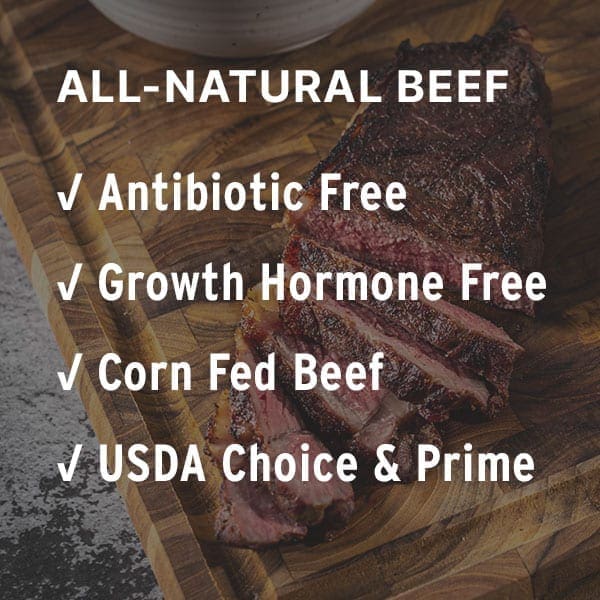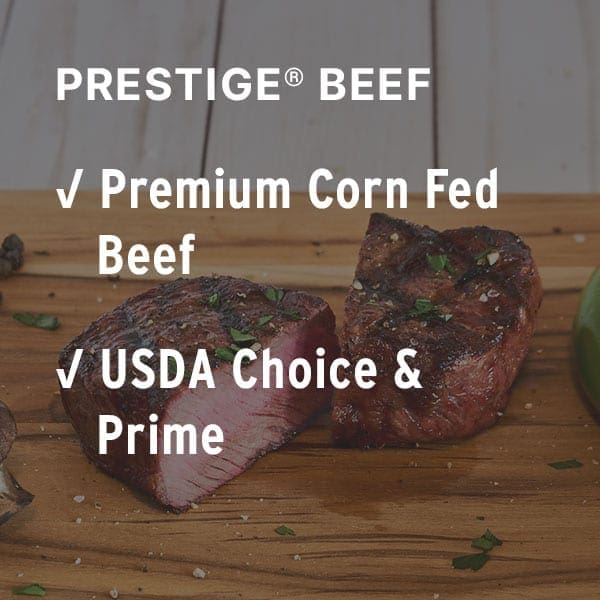Considered by many to be the most prized cut of beef. The Filet comes from a cut of beef called the PSMO or more commonly – tenderloin. It is definitely the most tender cut of beef, especially after it is aged to perfection.
Things to know when preparing filet mignon include the following:
- Filet is a lean cut of beef, overcooking won’t do it any favors as there is generally very little fat to help keep the internal part of the steak juicy.
- When cooking a filet it’s important to consider that filets are generally fairly thick for their respective weight because the cross section of the PSMO aka “tenderloin” is fairly small – about the size of the average person’s fist. Being cut a little thicker means that cook time and temp need to be adjusted accordingly. When grilling, it’s really best to have a good digital thermometer to monitor internal temperature.
- We prefer filets cooked rare to medium rare. This is an internal temperature of 120 – 130F. While the USDA recommends that steak be cooked to at least 140F, in many cases that is simply overcooked for a high quality cut of meat. Opinions being like ears – most folks have them – this is simply our opinion based on years of experience cooking steak.
- While the grill is the traditional steak prep method for many, it is not the best way to consistently prepare steaks. Many may consider that statement heresy, but it is true. Using a conventional oven to cook steaks will result in a much more consistent steak. Once a person figures out the idiosyncrasies of their oven, steaks can be cooked perfectly time and time again.
- We recommend a thoroughly preheated 400F oven for all steaks.
- Prior to cooking the steak in the oven, it is best to season and pan sear the steak in a 50/50 mixture of AA Unsalted butter and extra virgin olive oil. The reason for the blend is that the butter will help to caramelize the outer layer of meat quickly, which will create a crust that will help to seal in all the juices. A tablespoon of each is correct approximate amount for a 12” pan.
Nebraska Star Beef® produces 3 different sizes of Filet: our Petite cut which is 5oz, our Classic Cut which is 8oz and our 12oz King Cut. The variation in the different cuts is simply thickness, and each steak will require it’s own cook time – keep in mind the internal temperature of the steak will define it’s “done-ness” and while times and temps can be predicted, the only way to “know” is by using a digital meat thermometer while one is cooking.
Note* It is common to see the word Fillet & Filet interchanged. The common method is to use the spelling filet – when talking meat and the spelling fillet – when talking about fish. However, its is also seen as fillet when used to describe Fillet Mignon. So as in a lot of English language rules… there really isn’t one.







